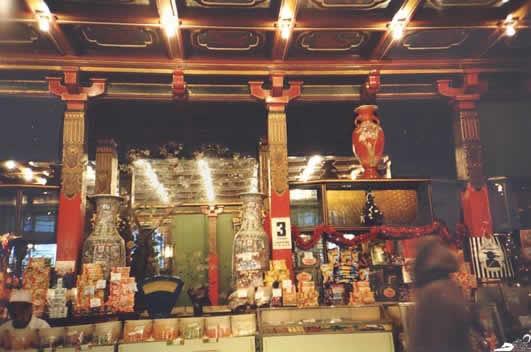Contemporary Moscow
VDNKh – the exposition of Soviet progress
VDNKh – Vystavka Dostizheniy Narodnovo Khosyaistva = Exhibition of the Achievements of National Economy, is nowadays called officially VVTs – All-Russian Center for Exhibitions. It was renamed in 1992 by a decree by Boris Jelzin, and has been trying to present itself as an exhibition center.It got started, though, as something quite different.
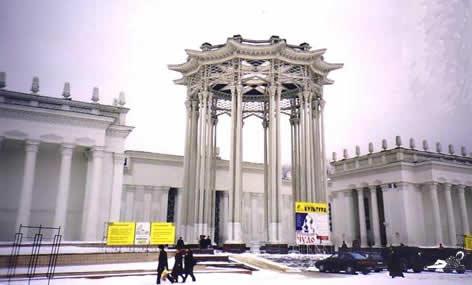
VDNKh was originally constructed as the Exhibition of Agriculture of the Whole Soviet Union, and opened in 1939. It was meant – together with other exhibition parks, as the one for industry near the Crimean Wall, and the one for construction, on the Frunze-Quay – to show to the citizens of the capital and to all visitors the achievements of socialist economy. It had, on the contrary to its tasks today, no commercial caracter at all. It was a place for education and for recreation. And, of course, for propaganda. People should admire the technical achievements the socialist system was capable to produce as it had eliminated all destructive competition, freed the creative spirits of man which in capitalism are supressed and reached a nivel of cooperation unseen so far in these lands.
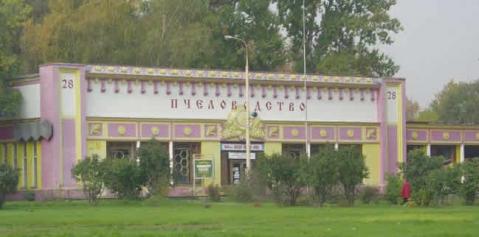
The technical achievements of Soviet Union are undisputed even today by people who are not blinded by ideological onesidedness. But still, the visitors of the exhibition could not gain knowledge of the access of the country’s citizens to these achievements. A new agricultural machine might be capable of real miracles – but how many agricultural entities would get it in the next ten years in order to enjoy the progress of science? The gap between scientifical development and its realization in the sphere of production has always been a kind of brake block in every Soviet style economy.
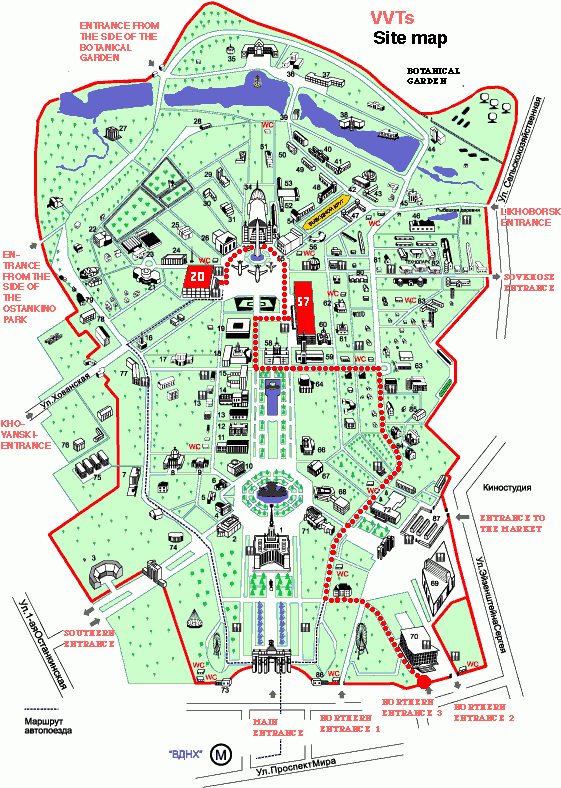
The exhibition area already in those days covered 136 hectares with 250 buildings of different size. There were ponds and fountains, and places to eat. At the Northern Entrance stood the most famous statue of Soviet art: The statue of the ’Worker and the Kolkhose-woman’ by Vera Mukhina.

This statue was originally constructed for the world exhibition in Paris in 1937. It was to be the decoration of the Soviet pavilion. The sculptor was given the assignment to construct a statue that should show the strength and unity of the Soviet system and make the bourgeois of the world tremble with fear. Mrs. Mukhina and her team chose stainless chrome-nickel steel sheets as the appropriate material to represent Soviet strength. In the 10 months it took to form and assemble the statue – which is 24 meters high – Molotov and even Stalin visited the factory where it was made to see how their propagandistic symbol was progressing.For the transport the statue was cut in 65 parts. Together with the machinery used for re-assembling and erecting it on top of the Soviet pavilion it occupied 28 train wagons. This way she was also brought home after the exhibition was over, although there were proposals from French politicians to keep it in Paris. The monument had great success in Paris, and became famous all over the world. (There are rumours that alledgedly the waving scarf of the woman resembled the profile of Trotsky, and so it was slightly changed after its return from Paris.) Upon her return the statue was reassembled and put somewhere near the Northern Entrance Gate of the Agricultural exhibition center, on a 9-meter pedestal.
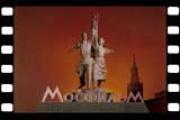
In 1947 the statue, together with the big Kreml tower, became the Logo for the main film studio of Soviet Union, Mosfilm. It appeared first as the opening of a film by Grigori Aleksandrov, ’Spring’. As the original proved difficult to have pictures taken of, due to its size, in 1950 a contract was made with Vera Mukhina and she created a smaller plaster model of her statue that till today is kept at Mosfilm. Some years ago someone wanted to dispute Mosfilm’s right to use the staue as a logo and filed a lawsuit, but was turned down. The picture with the statue preceded such famous films as ’Andrei Rublyov’, ’The Cranes Are Flying’, ’The Gipsy Camp Ascends to Heaven’, or ’Dersu Uzala’. It constitutes the property of Mosfilm.
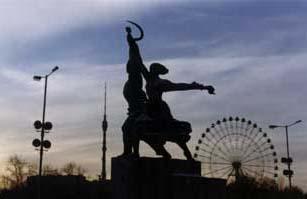
After 1991 everything from Soviet times became worthless and sellable. Foreigners wanted to buy the statue, but somehow they didn’t succeed. Finally in 1998 it was decided that the statue had to be saved, and for that purpose, restored. Yuri Luzhkov, the mayor of Moscow, personally engaged in these decisions. There was indeed some need for repair. The legs of both gave in, leaving especially the lady o-legged. Her backwards thrust arm and the scarf lowered to the height of her belt. In 2004 the statue was cut to pieces again, using the old welding seams, and brought to a workshop for restoration. It is supposed to be back by the end of 2005.Who knows, of course. Perhaps, once restored, it is sold to Hollywood for good money.
During World War II, and for nine more years the exhibition park was closed. After thorough reconstruction – the area was enlarged to 207 hectares, and the amount of buildings rose to 383 – it was reopened in 1954. The new main entrance was right beside the underground station that leads to the exhibition. Finally in 1958 it was decided to unite the agricultural, industrial and construction exhibitions in this area and the new united exhibition park was renamed VDNKh. Already before that certain pavilions had been built or changed in order to represent the economic developments in the various republics-entities united in Soviet Union, such as Georgia, Aserbaidzhan, or the Baltic States.
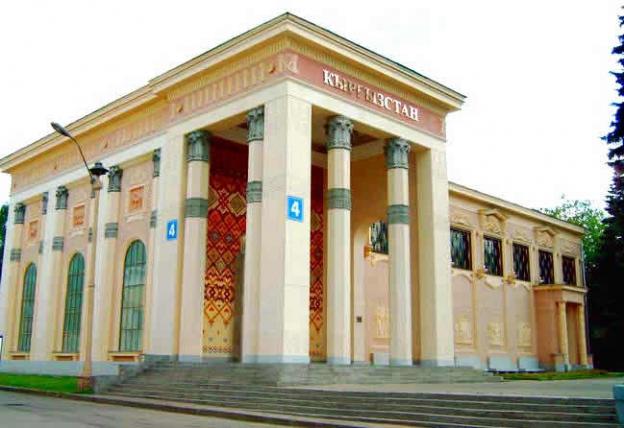
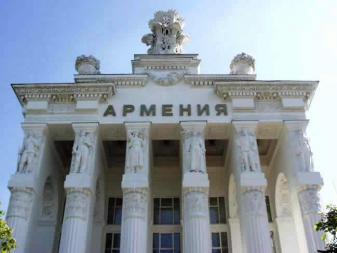
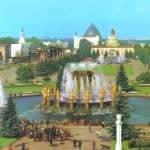
In the vast area of VDNKh the visitor could get an idea of the special agricultural and industrial progress in the various republics of Soviet Union, of new products (that perhaps would be very hard to find in the shops!) or of the whole world of cosmology. One might get an idea of new electrotechnical methods, of new chemical materials, of revolutionary inventions. VDNKh was like a mixture of an enormous technical museum combined with palace-like buildings, recreational areas, playgrounds, green grass and fountains of a splendour that evoke the time of the Tsars.
It was impossible, by the way, to have a look at all the buildings in one day, or even in two. Its alleys altogether have a length of 65 kilometers. There were minibuses for the visitors’ transport.
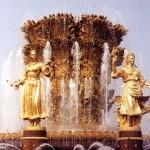
After Soviet Union was gone harsh times started for the exposition grounds. No one was in need any more to advertise Soviet progress. To the new politicians devoted to the promotion of Market Economy VDNKh became a both financial and ideological burden. First, its maintainance cost money without bringing profit. Second, it was a uncomfortable witness of times gone by, a huge monument that proved that the Soviet system did have its advantages and did produce acknowledgeable results.
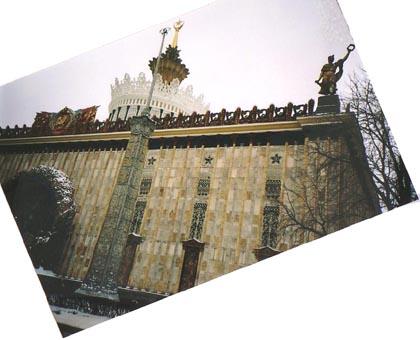
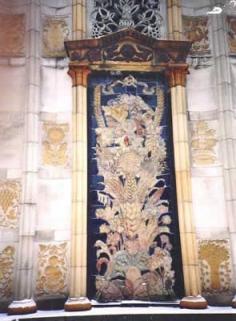
Third, the whole area of VDNKh covers valuable real estate property that speculators are keen of. Bad times for this unique entity. VDNKh today, as VVTs, is a Joint Stock Company whose shares are held by the City of Moscow (31%) and the Russian Federation (69%). Of course these numbers may be outdated today, as my sources aren’t the most recent ones. The decision of 1992 was made in order to preserve the exhibition area as such.But VDNKh, as many other parts of the former Soviet economy and society, proves badly equipped to fit the demands of the new era called Capitalism, or Market Economy. The buildings are expensive to keep in order, being constructed of sensitive materials. At the same time, they prove inappropriate as exhibition centers for nowadays commercial purposes. For a while they were rented to private businesses, as ordinary shops.
In the park, all kinds of merchandise was sold on paste-boards, even in winter: Pirate-copy CDs, China-made clothing – fake Levi’s and the like, horror film videos, crime thrillers, and so on. But in the end the buildings with their overboarding decoration prove inefficient for both exhibitional and purely commercial purposes. They are far too high. Therefore the space available for laying out merchandise is in misproportion to the heigth of the building. Still this space has to be heated, and kept in order...
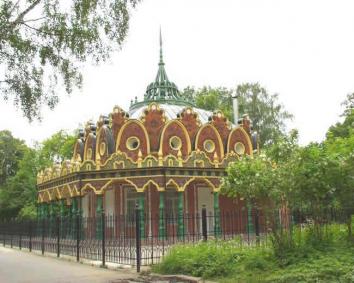
All these disadvantages exist besides other necessities of today’s business that the buildings of VDNKh are lacking: electric cables of high capacity, sockets everywhere, standing lines for computers, multiple telephone lines ... All manageable, but only with money.
Already some of the original buildings of the area have been torn down, in order to create space for new ’modern’ ones. In the end, the Stalin-era style of temple-like, palace-like buildings, of overloaded, tsarist era decorations, of gold and stucco, can always be questioned. As Pilate asked: ’What is Truth?’, one can always ask: ’What is Beauty?’ and declare the whole Stalin-era architecture obsolete, worthy only of the manure heap of history.And replace it with ’modern’, ’adequate’, and most of all: profitable! buildings of concrete and steel and glass, as in Shanghai, and New York, and Hongkong, and Berlin, and Stockholm, and Paris, and London ...|
It is very dangerous to live in Moscow if you are a ’businessman’, that is someone connected to the redistribution of nationalised property that took place during the 90-ies. And it is also dangerous if you are a journalist who wants to investigate how these ’New Russians’, the new rich (and very rich!), came into the possession of their huge property.
In Russia, due to the use of hard drugs and the horrible conditions in Russian prisons – Russia has one of the highest prison inmate rates in the world, only equalled by the USA – there is an infection rate of AIDS that approaches epidemic proportions. Other contagious diseases, such as tuberculosis and hepatitis B and C, are also progressing. Alcoholism, suicide and emigration are furthermore having a severe impact on population development. Russia’s population has decreased sharply, due to the increase in the average mortality age, and infant mortality, and the decrease in births. ’Who wants to give birth nowadays?’ a woman on the train asked me. ’What for? To create beggars?’
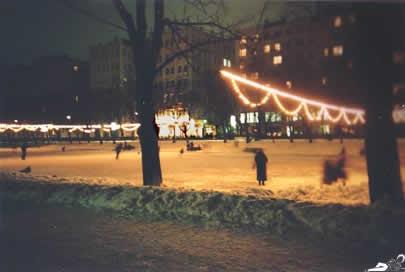
And still, with all these atrocities taking place, and the real threat from terrorists (and perhaps the Secret Service?) who blow up or assault underground trains and underground stations, residence blocks and theatres, Moscow is still a safer place for the individual than many cities in Western Europe and the USA. If you are an adult, not a businessman, and you don’t look like you come from the Caucasus or other parts of the world, like Africa or the Far East – nobody cares for you. In case you don’t correspond to that – watch out!
Moscow, more than other parts of Russia I’ve been to, evokes the famous saying of Tyuchev:
Russia you can’t grasp/comprehend with your mind
you can’t measure it with the Arshin (a measure unit from old times)
it has an unique form,
you can only believe in it.
